How Nvidia MPO Cables Enhance High-Speed AI and GPU Networking
The landscape of Artificial Intelligence (AI) and High-Performance Computing (HPC) is in a perpetual state of rapid evolution, constantly pushing the boundaries of speed, data throughput, and computational power. As datasets grow exponentially in size and complexity, and AI models become increasingly sophisticated, the demand for faster, more efficient, and scalable networking solutions becomes absolutely paramount. Nvidia’s Multi-fiber Push-On (MPO) cables have emerged as a crucial component in enabling the lightning-fast communication required for cutting-edge AI and GPU-accelerated workloads. This comprehensive blog post delves deep into the intricacies of how these cables contribute to enhanced performance, efficiency, and scalability in demanding computing environments, exploring the technical nuances and practical implications of their implementation.
The Bottleneck Problem: Why Traditional Cabling Falls Short
Traditional copper cabling, while a cost-effective solution for many standard networking applications, struggles to keep pace with the massive bandwidth demands of modern AI and GPU clusters. As data rates escalate, copper cables experience significant signal degradation and attenuation over distance. This necessitates the implementation of complex equalization techniques, such as pre-emphasis and equalization, to compensate for signal loss, ultimately limiting performance and creating a bottleneck that hinders the full potential of high-performance hardware. Furthermore, copper cabling is inherently more susceptible to electromagnetic interference (EMI), which can further degrade signal quality and reliability, especially at higher frequencies. The skin effect, where high-frequency currents tend to flow along the surface of the conductor, also becomes a significant limiting factor, reducing the effective conductivity of the copper and exacerbating signal loss. Crosstalk between adjacent copper wires can also be a problem.
MPO Cables: A Fiber Optic Solution
Nvidia MPO cables leverage the inherent advantages of fiber optics to overcome the limitations of traditional copper cabling. Fiber optic cables transmit data as pulses of light through incredibly thin strands of glass or plastic, offering significantly higher bandwidth and lower signal loss compared to copper. This fundamental difference allows for much faster data transfer over considerably longer distances with minimal signal degradation. MPO connectors, specifically, are ingeniously designed to handle multiple fiber strands (typically 12 or 24, but higher counts are possible) within a single, compact, and easily manageable connector, dramatically simplifying cable management and deployment in the dense and often chaotic environments of modern data centers. These connectors utilize a push-on/pull-off mechanism for easy installation, maintenance, and reconfiguration.
Key Advantages of Nvidia MPO Cables for AI and GPU Networking:
- Ultra-High Bandwidth: MPO cables support extremely high data rates, enabling the rapid and efficient transfer of the massive datasets required for both AI training and inference. This ensures that GPUs can communicate seamlessly with each other and with other crucial system components at optimal speeds, minimizing latency and maximizing overall processing power. This capability is particularly crucial for distributed training scenarios where multiple GPUs work collaboratively on a single, complex model. Modern MPO cables, utilizing single-mode fiber and advanced modulation techniques like PAM4 (Pulse Amplitude Modulation with 4 levels), can support hundreds of Gigabits per second per fiber, and even Terabits per second aggregate bandwidth.
- Reduced Latency: The inherent low signal loss characteristic of fiber optics translates directly to reduced latency, a critical factor for real-time AI applications, high-frequency trading platforms, and distributed computing tasks. Lower latency facilitates faster communication between GPUs, leading to quicker training times, significantly improved overall system responsiveness, and ultimately, more accurate and timely results. Lower latency also enhances the efficiency of distributed consensus algorithms used in distributed training, allowing for faster convergence.
- Long-Distance Reach: Unlike copper cables, fiber optic cables can transmit data over significantly longer distances without experiencing substantial signal degradation. This extended reach is essential for scaling AI and GPU clusters across larger data centers, connecting different server racks within a facility, or even linking multiple geographically dispersed locations. This capability eliminates the need for signal repeaters, simplifying network design and reducing overall infrastructure costs. This is especially important in hyperscale data centers and cloud computing environments.
- Simplified Cable Management: MPO connectors consolidate numerous fiber strands into a single, easily manageable connector, simplifying cable routing, significantly reducing clutter, and making it considerably easier to install, maintain, and troubleshoot high-density networks. This is particularly important in large data centers where thousands of cables might be required to connect all the various components. The use of MPO fan-out cables further simplifies the connection to individual devices, providing a more organized and manageable cabling infrastructure.
- Future-Proofing: As bandwidth demands continue their relentless climb, fiber optic infrastructure provides a robust and future-proof foundation for AI and GPU networking. MPO cables can readily support increasingly higher data rates with relative ease, ensuring that your infrastructure can adapt to evolving technological needs and avoid costly and disruptive upgrades in the near future. The modularity of MPO connectors also allows for easy expansion and reconfiguration as your computing needs evolve. Different fiber types (e.g., OM4, OM5 for multi-mode; OS2 for single-mode) can be used within the MPO connector to accommodate different bandwidth and distance requirements.
- Electromagnetic Interference (EMI) Immunity: Fiber optic cables are inherently immune to EMI, ensuring reliable signal transmission even in electrically noisy environments. This is a significant advantage over copper cables, which can be susceptible to EMI-induced performance degradation, especially in the dense equipment racks of modern data centers. This immunity to EMI ensures consistent and predictable performance of the high-speed interconnects.
- Enhanced Security: Fiber optic cables offer a higher level of security compared to copper cables, as they are significantly more difficult to tap into without detection. This is an important consideration for handling sensitive data and applications, adding an extra layer of protection against unauthorized access. While physical security measures are still crucial, the inherent difficulty of tapping fiber adds another significant hurdle for malicious actors.
- Lower Power Consumption: Fiber optic systems generally consume less power than equivalent copper systems, which can be a substantial advantage in large data centers where power consumption is a major operational cost. This lower power consumption contributes to both cost savings and a reduced environmental footprint.
- Improved Airflow: The smaller diameter of fiber optic cables compared to copper cables can improve airflow within server racks and data centers. This improved airflow can contribute to more efficient cooling and potentially reduce cooling costs.
Nvidia’s Role in MPO Cable Integration:
Nvidia recognizes the critical importance of high-speed interconnects in maximizing the performance of their GPUs and AI platforms. They offer a range of MPO cables meticulously optimized for their networking solutions, ensuring seamless integration, interoperability, and reliable performance. These cables are subjected to rigorous testing to meet the stringent requirements of high-bandwidth applications, providing users with a robust and dependable solution. Nvidia often collaborates closely with leading cable manufacturers to ensure compatibility and optimize performance, paying close attention to factors like insertion loss, return loss, optical budget, and other crucial optical characteristics. They also provide guidance on best practices for cable management and deployment.
Applications in AI and GPU-Accelerated Computing:
Nvidia MPO cables are essential for a wide range of demanding applications, including:
- Large-Scale AI Training: Training complex AI models, particularly deep learning models, requires massive amounts of data and immense computational power. MPO cables enable the fast and efficient communication between GPUs needed for distributed training, significantly reducing training times and allowing for the use of larger, more complex models that would otherwise be computationally infeasible. They facilitate the implementation of sophisticated techniques like model parallelism and data parallelism, which are crucial for scaling AI training to large clusters.
- High-Performance Computing (HPC): In HPC environments, MPO cables facilitate the rapid exchange of data between compute nodes, enabling scientists and researchers to tackle complex simulations and analyses in various fields, including weather forecasting, drug discovery, materials science, and computational fluid dynamics. They are essential for achieving the low latency and high bandwidth required for tightly coupled HPC applications where nodes need to communicate frequently and efficiently.
- Data Center Networking: MPO cables play a pivotal role in connecting servers, switches, and other network devices within data centers, providing the high-bandwidth backbone for cloud computing, big data analytics, and other data-intensive applications. They enable the implementation of high-bandwidth, low-latency network architectures like spine-leaf topologies, which are essential for modern data center performance.
- Deep Learning Inference: Even during inference, where a trained model is used to make predictions on new data, fast interconnects are important for minimizing latency and maximizing throughput, especially in real-time applications like autonomous driving, video analytics, and natural language processing. Low latency inference is crucial for providing a responsive user experience.
- GPU-Accelerated Visualization: Visualizing large and complex datasets often requires transferring massive amounts of data between GPUs and display devices. MPO cables enable this high-bandwidth communication, allowing for smooth and interactive visualizations, which is crucial in fields like scientific visualization, medical imaging, and computer-aided design.
- High-Frequency Trading: In the financial industry, MPO cables are used to connect servers in high-frequency trading platforms where even the smallest delays can result in significant financial losses. The low latency of fiber optics is critical in these applications.
Technical Considerations:
When selecting MPO cables for AI and GPU networking, several crucial technical factors should be carefully considered to ensure optimal performance and reliability:
- Fiber Type: Single-mode fiber (SMF) is typically preferred for long distances and very high bandwidth applications, while multi-mode fiber (MMF) is commonly used for shorter distances within a data center. OM4 and OM5 MMF are commonly used for connecting servers to top-of-rack switches, while OS2 SMF is used for longer links between switches or connecting to core routers. The choice of fiber type depends on the specific requirements of the network, including distance, bandwidth, and budget.
- Connector Type: Different MPO connector types exist, including APC (Angled Physical Contact) and UPC (Ultra Physical Contact). APC connectors offer lower return loss due to the angled ferrule, which minimizes back reflections. This is important for high-bandwidth applications where signal integrity is critical. UPC connectors are more common and less expensive. It’s crucial to ensure compatibility between the MPO connectors on the cables and the MPO ports on the networking equipment.
- Insertion Loss: Insertion loss measures the amount of light lost as it passes through the connector. Lower insertion loss is always better, as it indicates less signal degradation. Insertion loss is typically measured in decibels (dB). High-quality MPO connectors and cables will have low insertion loss values. The total insertion loss of a link is the sum of the insertion losses of all the connectors and the fiber itself.
- Return Loss: Return loss measures the amount of light reflected back from the connector towards the source. Higher return loss is generally better, as it indicates less signal reflection. Reflections can cause signal distortion and degrade performance. APC connectors typically have higher return loss than UPC connectors.
- Polarity: MPO cables have different polarity configurations (e.g., Method A, Method B, Method C) that define how the fibers are arranged within the connector. It is absolutely essential to maintain proper polarity throughout the network to ensure correct signal transmission. Mismatched polarity can lead to network outages. Understanding the polarity scheme used by your networking equipment is crucial. Method B is commonly used in data centers.
- Fiber Count: MPO connectors are available with different fiber counts, typically 12 or 24 fibers, but higher fiber counts are possible. The choice of fiber count depends on the bandwidth requirements of the link and the number of connections needed. It’s important to choose a fiber count that is sufficient for current needs and allows for future expansion.
- Cable Jacket: The cable jacket protects the optical fibers from physical damage and environmental factors. Different cable jacket types are available for different environments, such as indoor, outdoor, and plenum-rated cables. Plenum-rated cables are designed for use in plenum spaces (spaces above the ceiling or below the raised floor) and are required to meet strict fire safety standards.
- Bend Radius: Fiber optic cables have a minimum bend radius that must be observed to avoid damaging the fibers. Exceeding the bend radius can cause signal loss and even breakage. It’s important to follow the manufacturer’s recommendations for bend radius when installing MPO cables.
- Optical Budget: The optical budget is the difference between the optical power transmitted by the source and the minimum optical power required by the receiver. The optical budget must be sufficient to account for all the losses in the link, including insertion loss, fiber attenuation, and other losses. A properly calculated optical budget ensures reliable signal transmission.
- Testing and Maintenance: After installation, MPO cables should be tested to ensure proper functionality. Optical time-domain reflectometers (OTDRs) can be used to measure insertion loss, return loss, and identify any faults in the fiber. Regular maintenance, including cleaning the connectors, is also important to ensure optimal performance.
Best Practices for MPO Cable Deployment:
- Plan your cabling infrastructure carefully: Consider future needs and ensure that the cabling infrastructure is scalable.
- Use high-quality MPO cables and connectors: Investing in high-quality components will ensure reliable performance and minimize downtime.
- Maintain proper polarity: Double-check the polarity of all MPO connections to avoid network outages.
- Follow the manufacturer’s recommendations for installation and handling: Proper handling will prevent damage to the cables and connectors.
- Use cable management tools: Proper cable management will keep the cabling organized and prevent clutter.
- Test and certify the cabling after installation: Testing will ensure that the cabling meets the required performance standards.
- Regularly inspect and clean the connectors: Clean connectors are essential for optimal performance.
Furthermore, staying abreast of the latest advancements in MPO technology is crucial. The industry is constantly innovating, with new fiber types, connector designs, and cabling solutions emerging regularly. Keeping informed about these advancements will allow you to make informed decisions about future upgrades and ensure that your infrastructure remains at the cutting edge of performance. For instance, advancements in multi-mode fiber technology, such as OM5, offer even higher bandwidth and longer reach compared to OM4, making them a viable option for certain applications. Similarly, developments in single-mode fiber technology continue to push the boundaries of bandwidth and distance.
Beyond the technical aspects of MPO cables themselves, it’s also important to consider the broader networking ecosystem in which they operate. The performance of your AI and GPU cluster depends not only on the quality of the cables but also on the performance of the switches, routers, and other network devices. Nvidia offers a comprehensive suite of networking solutions designed to work seamlessly with their GPUs and AI platforms, including high-performance switches and network adapters. These solutions are optimized for the demanding requirements of AI and HPC workloads, ensuring that the full potential of the MPO cables is realized.
Another key consideration is the management and monitoring of your high-speed network. As the complexity of AI and GPU clusters increases, effective network management becomes even more critical. Tools and technologies that provide real-time visibility into network performance, including monitoring bandwidth utilization, latency, and error rates, are essential for identifying and resolving potential bottlenecks. Nvidia’s networking solutions often include management and monitoring capabilities that can help you keep your network running smoothly.
The increasing adoption of disaggregated infrastructure in data centers also has implications for MPO cable deployment. Disaggregated infrastructure involves separating compute, storage, and networking resources, allowing for greater flexibility and scalability. In this environment, MPO cables play a crucial role in connecting the various disaggregated components, enabling high-bandwidth communication between them. The modularity and high density of MPO connectors make them well-suited for this type of architecture.
Looking towards the future, the role of MPO cables in AI and GPU networking is only expected to grow. As AI models become larger and more complex, and as the demand for real-time AI applications increases, the need for high-bandwidth, low-latency interconnects will become even more critical. MPO cables, with their ability to support extremely high data rates and their ease of management, are well-positioned to meet these future demands. Furthermore, as new technologies like silicon photonics emerge, which integrate optical components directly onto silicon chips, MPO cables will likely play a crucial role in connecting these photonic devices to the rest of the network.
In conclusion, Nvidia MPO cables are not just cables; they are a critical enabler of innovation in the fields of AI and HPC. They provide the essential foundation for high-speed communication, allowing researchers, scientists, and engineers to push the boundaries of what’s possible. By understanding the technical aspects of MPO cables, staying informed about the latest advancements, and considering the broader networking ecosystem, you can ensure that your infrastructure is well-equipped to handle the challenges and opportunities of the future. The right choice of MPO cables, combined with a well-designed and managed network, can significantly impact the success of your AI and HPC initiatives. It’s an investment in performance, scalability, and future-proofing your infrastructure for the ever-evolving world of high-performance computing. Don’t underestimate the power of these seemingly simple cables – they are the backbone of the high-speed networks that are driving the future of AI and scientific discovery.
FAQ's
Nvidia MPO cables support data rates of up to 400Gbps, making them ideal for high-performance AI and GPU networking
By enabling parallel data transmission across multiple fiber strands, MPO cables significantly reduce data transfer delays, enhancing AI model training and real-time processing.
Yes, they are designed to be backward-compatible with existing high-performance networking infrastructure, including Nvidia’s NVLink and InfiniBand solutions.
MPO cables consolidate multiple fiber strands into a single connector, providing higher data throughput, lower latency, and better scalability compared to traditional single-fiber solutions.
Yes, their high-density, high-bandwidth capabilities make them ideal for hyperscale cloud computing and large-scale AI deployments.
Their compact, multi-fiber design reduces cable clutter and simplifies installation, improving airflow and cooling efficiency in high-density server environments.
They typically use OM4 or OM5 multimode fiber, ensuring low attenuation and high signal integrity over extended distances.
While current versions support up to 400G, future iterations of MPO technology are expected to support 800G and beyond as AI networking needs evolve.
Nvidia MPO cables feature precision optical alignment and low insertion loss, ensuring superior signal integrity and minimal data loss.
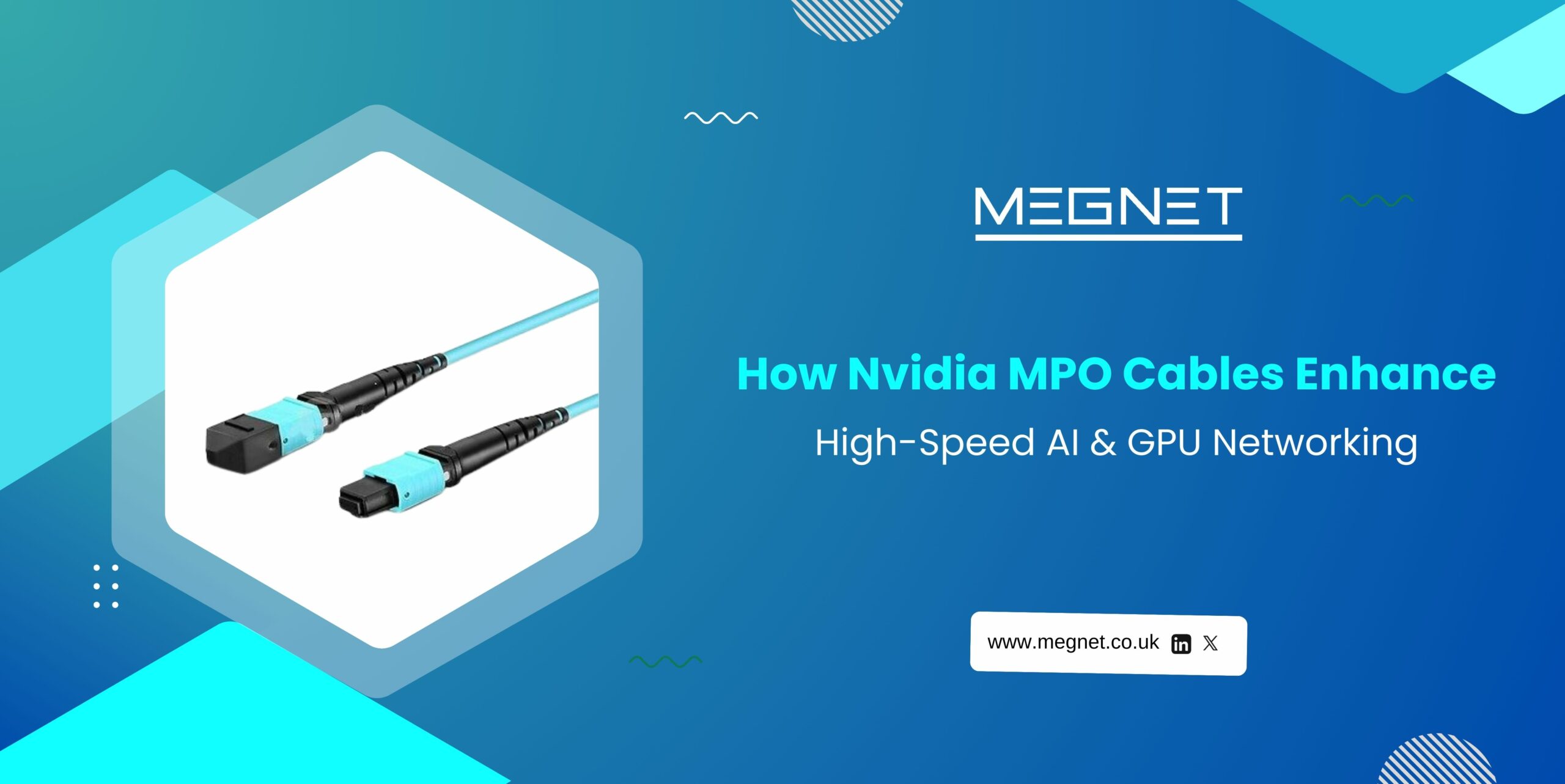


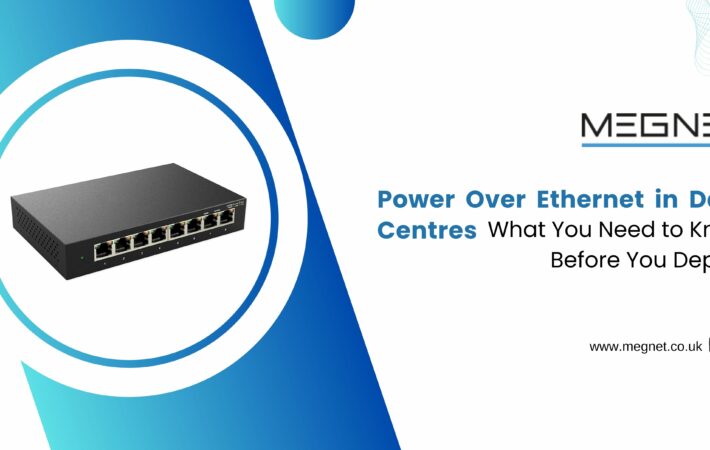
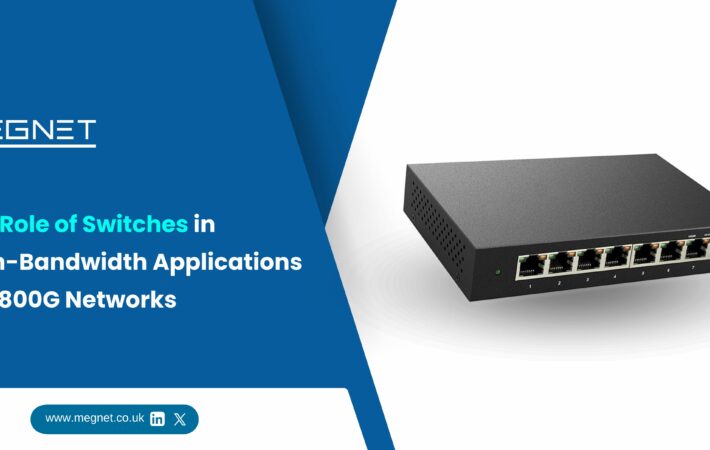
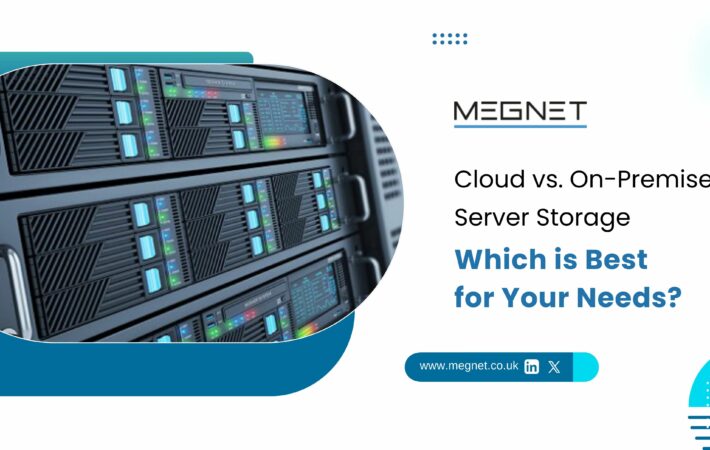
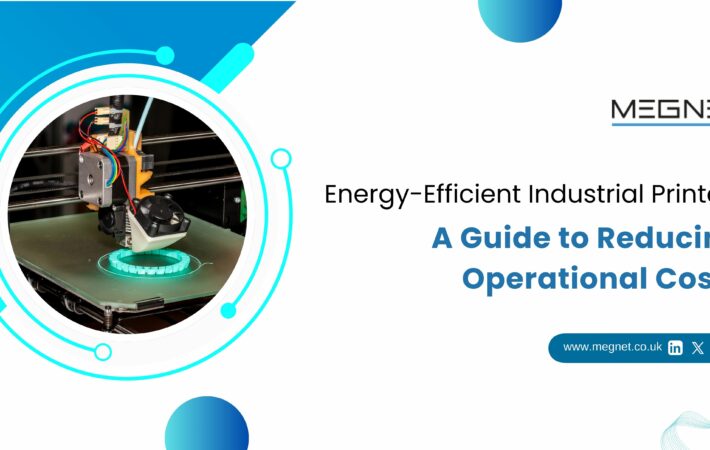


Leave a comment
Your email address will not be published. Required fields are marked *